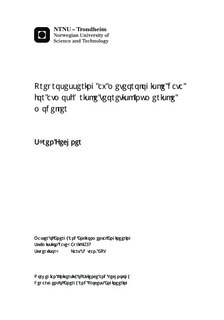Preprosessering av meteorologiske data for atmosfæriske teoretisk/numeriske modeller
Master thesis
Permanent lenke
http://hdl.handle.net/11250/2350178Utgivelsesdato
2015Metadata
Vis full innførselSamlinger
Sammendrag
In order to investigate vertical wind profiles and deviations with respect to atmospheric stability in maritime environment a case study at the Skipheia measurement site on Frøya is presented. In this study, vertical wind profiles including atmospheric stability such as the Monin-Obukhov similarity theory (MOST) are compared to non-stability corrected wind profiles which are commonly used in wind industry. For this purpose, the atmospheric stability at the Skipheia measurement site is investigated and five different extrapolation methods are tested and compared. Therefore, measurement data at 10 m are extrapolated to 70 m and compared to the actual measurement data at 70 m. This analysis focuses on the deviation of wind profiles due to atmospheric stability and the impact on power output calculations. Therein, the sensitivity of input parameters such as wind shear exponent, roughness length and measurement height is investigated. It is found that models including atmospheric stability result in reduced deviations to the actual measurements; especially, in unstable and very unstable atmospheric stratification. Considering all stability classes the wind profile introduced by Peña [1] resulted in the highest accuracy. In addition, the lowest error on a power output calculation is found with the introduced wind profile by Peña as well as MOST. Both models achieve an error of 2.4%. The measurement height is found to have a significant influence on the accuracy of MOST in stable stratification whereas in unstable conditions its significance is negligible.
